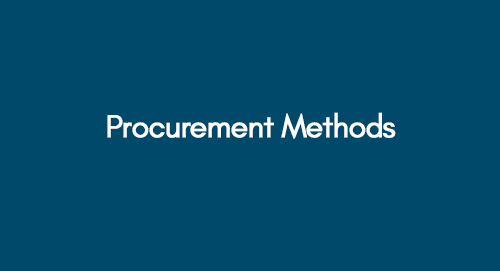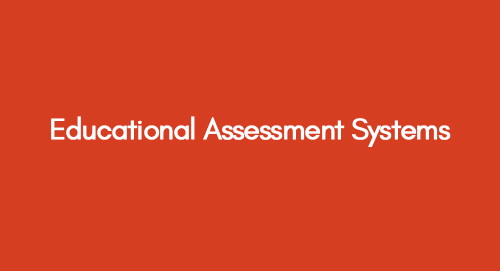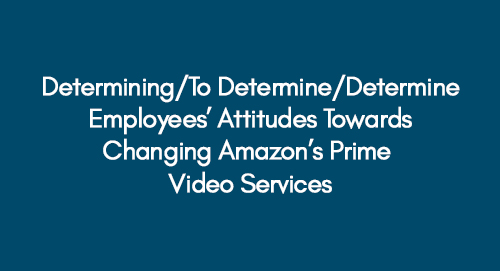
Application of Customer-based Brand Equity Model (CBBE) and the Sources of Brand Equity for ROLEX
December 19, 2020
Analyzing the Significance of Procurement Methods in Project Management
December 19, 2020Big-thinking clients in construction are causing both challenges and chances in how people are managed because companies now need to focus more on what customers want. The recent demands of customer and market-oriented strategies from visionary clients in the construction sector have generated challenges and opportunities in human resource management.
HRM Interventions in Stress Management
The quality and value-driven services requirements have changed the priorities of this sector in the strategic management of human capital. Likewise, the business models and management approaches are also likely to be modified, given new HRM paradigms. However, due to the significance of economic activity and labour intensiveness of the construction industry, contemporary HRM principles are not widely observed (Marchington and Wilkinson, 2012).
Though management styles and practices can significantly impact organizational performance, the construction sector lacks long-term HRM planning and barely comprises project-based workforce management (Storey, 2000). This report is based on the critical review of the contemporary HRM approaches in the construction industry and applications of the management perspective of HRM in the global construction sector (Wilkinson et al. 2012).
Contemporary HRM Practices and Policies
In the realm of human resource management within construction projects, three distinct management practices stand out: soft, hard, and Harvard styles. As Gill (2007) outlined, the Soft HRM approach strongly emphasises optimizing the workforce's alignment with organizational objectives by first meeting their own needs and expectations. This approach takes inspiration from Maslow's (1954) hierarchy of needs and posits that a robust organizational environment can be achieved when management actively addresses the specific requirements of each employee. In contrast, Noe (2006) contends that optimal performance within construction projects hinges on strong motivation and a sense of belonging among individuals within the organization. Consequently, this model places great importance on fostering employee engagement and nurturing positive relationships to enhance overall project performance and success.
However, the Hard HRM approach favours the notion that organizations should deploy human resources structured and systematically, just like any other resource. Therefore, as in additional resources, cost-effectiveness and maximum output should also be desirable in HRM. Kleiman (2000) asserted that using this model assures the achievement of performance through effective management control of HR activities to sustain the competitive advantage. The structured HR strategy is designed in this model to fit the business strategy that includes strict performance management measures, workplace flexibility, outsourcing, and other important initiatives to operate the workforce efficiently. This management perspective is more prevailing in the construction sector as the management designs the workforce practices merely in line with the project requirements and is not considerate of the worker’s needs.
On the other hand, within the sphere of HR support for construction companies, the Harvard model offers an equilibrium between the soft and hard HRM approaches. This model perceives employees as invaluable assets while concurrently acknowledging their human dimensions in organizational decision-making and employee relations, all while harmonizing business objectives with societal expectations. It particularly suits contemporary learning organizations in the construction sector and encompasses vital elements such as workflow management, reward structures, performance evaluations, initiatives to foster employee commitment, competence development, alignment with organizational aims, and the cost-effectiveness of workforce management. Nevertheless, in the construction industry, the predominant tendency leans toward applying hard HRM practices, often due to project managers' hesitance in embracing contemporary HRM concepts. Given the project-centric nature of this industry, long-term HR planning and investments are frequently regarded as a luxury with uncertain returns for the organization, as underscored by the insights of Ness and Green (2012).
A Critical Review of HRM Theories' Implications in Construction
The construction industry globally faces significant HR challenges, characterized by practices often perceived as inconsiderate, informal, and casual regarding workforce management. This aligns with observations made by scholars such as Lingard et al. (2008) and Townsend et al. (2011). Additionally, the construction sector reports widespread occupational health and safety issues, as noted by Loudoun (2010), and these issues are closely intertwined with workforce management and labour relations, as emphasized by the International Labour Office (2001). When we consider management theories and models, it becomes apparent that management styles in the construction industry differ from those in other sectors, highlighting the industry's unique challenges. The primary concern revolves around the limited impact of long-term and visionary management planning. The construction industry often struggles to adapt to contemporary human resource management approaches, as observed by Townsend et al. (2011).
Learn the Effect of a Project Manager’s Leadership Style on the Performance of Employees
However, the main theories of HRM are geared around outcomes such as performance and increase in efficiency; the literature suggested MRM models as a way to obtain best practices that lead to achieving competitive advantage in human capital management (Torrington et al.2008; Storey 1995). Though the symbolic nature of discussions contradicts the above-discussed HR models, this critical review is not found in the literature related to the construction sector (Wilkinson et al., 2012). Furthermore, Belout and Gauvreau (2004) debated that the contemporary approaches in HRM are based on effective ways to manage and deploy human resources and consider the factors of personnel management.
Similarly, Lin et al. (2011) suggested that the cost-effectiveness of HRM is also an essential attribute for construction companies that lead to a lack of long-term HR planning and development initiatives. Hence, the construction industry needs to change the standpoint of treating people as a resource and deploy them according to the factors of production, as evident from the fact that a considerable proportion of the construction workforce is non-native / multi-lingual. Although this industry is more labour-intensive, it needs a more human relations approach to HRM in which employees are treated as individuals with unique attributes and qualities and should be managed according to their skills and willingness (Huemann et al., 2007; Townsend et al., 2011). Consequently, Dainty and Chan (2011) also argued that critical perspectives are essential for existing HR theories on their implication to project-based settings like that in the construction sector. Therefore, evaluating the application of existing HRM perspectives in the construction sector can provide an insightful and important judgment on their applicability in this sector.
Management Focus of HRM in Construction
In the context of HR strategies for a construction company, the management focus chosen for this paper aligns with one of the three HR perspectives introduced by Wilkinson et al. (2012), which encompasses human, resource, and management orientations. This particular perspective holds substantial significance within construction industry operations, as it entails pivotal management practices capable of effectively bolstering organizational and project performance. Contrarily, the human and resource perspectives predominantly revolve around addressing employees' specific demands and needs. In contrast, the management focus is grounded in the viewpoint of leadership and its proactive endeavours to enhance employee performance. Fleetwood and Hesketh (2007) have pointed out that, in the construction industry, the correlation between HRM practices and organizational performance lacks robust theoretical underpinning. Consequently, it becomes apparent that the interplay of employee-related factors and management requisites can considerably influence the overall performance of construction projects, as noted by Dainty et al. (2007).
Health and Safety in Today’s Construction Industry
The changing role of HRM in the construction sector is underscored by Raja et al. (2014), who highlight a significant management concern. Given the market's fluctuating demands for substantial projects, construction companies are increasingly inclined to prioritize a cost-benefit strategy in HRM, often sidelining long-term employment and development opportunities for their workforce. The prevailing approach mandates that training and development be incorporated as essential components, with workers expected to possess the necessary training and experience as prerequisites for project-specific hiring. This shift in operational dynamics has raised substantial HRM concerns within large construction firms. Without a secure and supportive work environment and the prospect of long-term career growth, the industry grapples with issues such as high employee turnover, extensive outsourcing, and sub-contracting, as evidenced by Green and May (2003).
Additionally, the involvement of multiple stakeholders in the construction industry also affects management strategies in a project. The diverse interests of management and workers make HRM more complicated due to the mismatch of employees and organisational goals; for instance, the issues of salaries and overtime affect employee relations differently in different geographical rejoins (Forde et al. 2009). Also, Wilkinson et al. (2012) declared that HR managers in the construction industry have a more strategic role in managing macro and micro-level changes and cultural management in international projects. Also, in management focus, enhancement of skills and attitude of employees need to be addressed to meet the diverse changes in different parts of the world.
Applications of Management Focus in Construction HRM
This section of the report evaluates some important implications of management focus areas in the construction sector
1. Employment/Recruiting
This basic function of HRM can be modified by designing application procedures, interview checklists and materials, and assessment tests. The aspect of management in this concern is to attract the right target market of potential employees with recruitment and selection techniques. For instance, Tarmac is a leading UK-based building material supplier and was established in 1903. Due to the industry's project-based nature and competition, Tarmac uses selection tools like group-based exercises, competence analysis, oral communication and presentations, and internal tests. Carefully made job descriptions limit confusion in both local and foreign operations.
2. Learning and Development
The management attribute involves designing training and development programs after a thorough needs analysis. In this aspect, HR professionals in the construction industry foresee the market demands, labour market characteristics, and conditions of existing workers in view of new technology and material and labour handling techniques. The rigorous training and development program can create a competitive advantage for the firm to assist it in reducing employee turnover rates.
For example, Blue Circle Cement UK offers four-level training to senior managers, staff teams, team leaders’ briefings, and team building workshops. In addition to the team training, employees were expected to conduct a skills training programme. Everyone had to learn at least four new skills, and craft workers had to learn at least one other new craft. Initial training involved between four and six weeks for each employee. These learning initiatives turned the Cauldon UK plant into a sustainable and dramatically efficient plant in 1990 compared to 1985, as shown in the image below (BCS 2012). Award-winning Total Quality Approach introduced a Quality staircase by sharing power and responsibility at each level. The following figure shows the quality staircase components Blue Circle Cement uses to develop a learning and development culture.
Figure 1; Total Quality Staircase Example (Source: BCS, 2012)
3. Industrial/ Employee Relations
According to Gospel (2009), industrial relations and employee engagement are contemporary management issues due to the influx of migrant workers, urbanisation, and changed working conditions in the construction industry. Sisson (2010) declared that the role of HR management is to provide liaison to resolve industrial and employee relation issues, union tackling strategies, assistance in collective bargaining negotiations and employee grievance procedures. HR management's role is crucial and sensitive as HR managers face workers’ demands and grievances directly.
On the other hand, Raj et al. (2013) argued that construction companies use outsourcing and subcontracting options to avoid interactions with employees and deploy employee relation responsibility to contracting companies (According to AEII (2007:7), ‘Improved productivity and enhanced project management capacity are critical to the industry. With a tight labour supply, one of the solutions necessary is to work better. Hence, avoiding direct employees and industrial relations issues with foreign or local subcontractors is not the long-term solution. The Strategic HRM approach requires the integration of company management with the obligations of employees to secure a better workforce engagement with the parent company to generate a long-term commitment.
4. Occupational Health and Safety
Wilkinson et al. (2009) and Sisson (2010) declared that the construction industry has a high propensity for workplace hazards and occupational safety issues. Therefore, management-focused HRM has a prime responsibility to foresee the prevention strategies development for occupational hazards, legal workplace safety policies, wellness and EAP programs, and harassment control procedures. The role of operations management is crucial with respect to HR in making the operations more secure with guarded machinery, safe heavy equipment, and safety precautions in handling harmful materials like Silica dust and asbestos.
The measures taken by large construction firms are exemplary in this regard; for instance, Balfour Beatty, a leading infrastructure firm in the UK, has used ultimate safety precautions for the workforce. Some crucial initiatives include improvements in operations, better communication among project teams, the time recorded operations, onsite medical and emergency assistance, and insurance cover for workers in providing occupational hazards (Balfour Beatty website n.d).
5. Affirmative Action/ EEO Policies
Providing equal opportunity employment is one of the important areas of management concern. Affirmative action or EEO program development and implementation helps the company resolve disputes related to EEO. For instance, EEO courts in the US gave the ruling against Skanska USA, leading Building contractors in the USA to pay $95,000 to settle a sexual harassment case based on racial and retaliation attributes from the company in case of violating federal laws and misconduct of termination of Black employees (EEOC US, 2015).
However, de Graft-Johnson et al. (2009) argued that the construction industry has failed to provide equal employment and career advancement opportunities to hired women, ethnic minorities, and immigrants. Similarly, Wilkinson et al. (2009) asserted that these neglected groups and individuals from diverse origins and genders could provide a potential and skilled workforce in the growing construction industry. Also, Campagne et al. (2007) suggested that although the percentage of women in construction has increased, the initiatives toward women's hiring and development are still slow in this industry.
6. Work and Family Balance
With busy schedules and heavy mechanical jobs in the construction industry with long hours of onsite work, Work-Life balance issues are also important in the workforce's well-being. The scholars urge the industry to develop flextime schedules, telecommuting job opportunities, daycare and dependent care help, informal family engagements and promotion of family life engagements in employees (Sisson 2010; Li and Namasivayam 2011; de Graft-Johnson et al. 2009). Large construction companies take systematic measures to sustain family-work balance in real businesses. For instance, Holder Construction has around 728 employees operating 60 sites nationwide. The company offers special programs like paid vacations, Family paid time off (PTO), and elderly and family care facilities, allowing employees to afford family care and take time from official duties (HCC, 2015). However, apart from a few such examples, a large portion of the construction industry still lacks severe measures in this area of management concern.
Recommendations
Based on the above discussion, the following recommendations are drawn for the construction industry in general to improve the outlined areas of management concern:
- The HR management strategies in the construction industry can be refined through careful employee filtration and appropriate selection processes, more efficient controls with humanistic approaches, and the provision of career advancements and training to offer long-term engagement to skilled employees. Though the industry's project-based nature is found to provide obstacles in long-term HR planning, the competitiveness of companies can be developed through effective HR only. Squandering human resources is as drastic as with any other country's resources.
- The role of HR managers needs to be more active and visionary apart from the routine payroll tasks. The basic functions of recruiting, selection, and training should be aligned with the company's strategic goals. Outsourcing and subcontracting should not lessen the role of the HR department as it needs to provide a liaison between the contractor and employees to achieve better employee commitment. The Hard model of HRM no longer supports contemporary construction companies, and the practitioners need proper implications of the Harvard model of HRM.
- The awareness and education of employees and all company stakeholders about the merits of a highly skilled workforce are essential. Effective training needs analysis, and the development of appropriate onsite and offsite training programs will lead the industry to the forefront of a responsible and proactive workforce. Extensive training programs can also reduce the dependency on subcontracting and outsourcing. Unions and training institutions can work as partners in these learning and development initiatives from the HR department. Evaluation of these training programs is also important to evaluate their impacts on business performance.
- Developing a standard framework for a high-performance and efficient workforce needs more concentration on factors like EEO/ Affirmative action, occupational hazards safety measures, and long-term employment opportunities. The construction industry was found to have poor performance in these measures, which led to more fatal accidents, high turnover, and demotivation of employees. The rigorous criteria for performance evaluation and considering the workforce as a human with family and life obligations, personal interests, and career goals will change the mindset of management in devising HR policies.
References
Alberta Employment Industry and Immigration (2007), A Workforce Strategy for Alberta’s Construction Industry. Building and Educating Tomorrow’s Workforce, Alberta’s 10 Year Strategy October 2007, p7 accessed from http://www.grahamlowe.ca/documents/231/People_Performance_Report-final.pdf.
Belout, A. and Gauvreau, C. (2004). Factors influence project success: the impact of human resource management, International Journal of Project Management, 22(1),1-11.
BCS (2012), Creating a new way of working based on trust: A Blue Circle Cement case study accessed from http://businesscasestudies.co.uk/blue-circle-cement/creating-a-new-way-of-working-based-on-trust/training.html#ixzz3qJBeNqip
Champagne, C., Harper Jantuah, C. and Peters, J. (2007) Different Women, Different Places: A study of the lives and experiences of black and minority ethnic women leaders working in the UK and Europe. www.katalytik.co.uk
de Graft-Johnson, A., Sara, R., Gleed, F. and Brkljac, N. (2009) Gathering and reviewing data on diversity in construction professions. Construction Industry Council and Construction Skills.
Dainty, a.R.J, and Chan, P. (2011), Human Resource Development: rhetoric, reality, and opportunities, Choinowsky and Songer, A.,(eds), Organization and Management in Construction, Spon Press, Oxk
Dainty, A. and Loosemore, M. (2012) Human Resource Management in Construction: Critical Perspectives, Taylor & Francis, London.
EEOC US (2015), Significant EEOC Race/Color Cases, accessed from US EEOC website on Nov 01, 12015, from http://www.eeoc.gov/eeoc/initiatives/e-race/caselist.cfm
Fan, D L Cui, MM Zhang, CJ Zhu, CEJ Härtel, C Nyland, 2014, Influence of high-performance work systems on employee subjective well-being and job burnout: empirical evidence from the Chinese healthcare sector, The International Journal of Human Resource Management 25 (7), 931-950
Fleetwood, S. and Hesketh, A. (2008) Theorising under-theorisation in research on the HRM-performance link. Personnel Review, 37 (2). pp. 126-144. ISSN 0048-3486
Gill, C. (2007). A Review of the Critical Perspective on Human Resource Management.
- Gospel (2009) ‘Human Resource Management: A Historical Perspective’, in A. Wilkinson, N. Bacon, T. Redman, and S. Snell, Handbook of Human Resource Management, London, Sage, 12-31.
HCC (2015) What you should know, accessed from https://www.google.com/search?q=Work+and+Family+Programs+in+construction+compaies&ie=utf-8&oe=utf-8#q=Work+and+Family+Programs+in+construction+companieshttp://www.flexibility.co.uk/cases/Balfour-Beatty.htm
International Labour Office (2001). The Construction Industry in the Twenty-First Century: Its Image, Employment Prospects and Skill Requirements, ILO, Geneva.
Huemann, M., Keegan, A. E. and Turner, J.R.,2007, “Human Resource Management in the Project-Oriented company: a critical review”, International Journal of Project Management, 25(3), 312-320.
Lin, I., Namasivayam, K., (2011), Understanding restaurant tipping systems: a human resources perspective, International Journal of Contemporary Hospitality Management, Vol. 23 Iss: 7, pp.923 – 940
Noe, Raymond A., et al. Human Resource Management: Gaining a Competitive Advantage. 5th ed. Boston: McGraw-Hill, 2006
Raja, J., Green, S., Leiringer, R., Dainty, A. and Johnstone, S. (2013) Managing multiple forms of employment in the construction sector: implications for HRM. Human Resource Management Journal.
Kleiman L 2000. Human Resource Management: AManagerial Tool for Competitive Advantage.2nd Edition, Cincinnati, OH: South-Western College Publishing.
Lingard, H., Townsend, K., Bradley, L. and Brown, K. (2008) Alternative work schedule interventions in the Australian construction industry: a comparative case study analysis. Construction Management and Economics, 26(10), 1101–12.
Lado, A. A., & Wilson, M. C., (1994). Human Resource Systems and Sustained Competitive Advantage: A Competency-based Perspective. Academy of Management Review, 19(4), 699-727.
Marchington, M. and Wilkinson, A. (2012) Human Resource Management at Work, CIPD, London.
Maslow, A. (1954), Motivation and Personality, Harper & Row, New York.
NOE, R. A. (2006). Fundamentals of human resource management. Whitby, Ont, McGraw-Hill Ryerson.
Storey, J. (2000), HRMJ: the first decade. Human Resource Management Journal, 10: 5–7. doi: 10.1111/j.1748-8583.2000.tb00001.x
Sisson, K. (2010) Employment Relations Matters, available at http://www2.warwick.ac.uk/fac/soc/wbs/research/irru/erm (accessed 23 July 2012).
Storey, J. (1995) Human Resource Management: A Critical Text, Routledge, London.
Townsend, K., Lingard, H., Bradley, L. and Brown, K.(2011) Working time alterations within the Australian construction industry. Personnel Review, 40(1), 70–86.
TORRINGTON, D., HALL, L., TAYLOR, S. and ATKINSON, C. (2009) Fundamentals of human resource management: managing people at work. Harlow: Pearson Education.
Wilkinson, A., Johnstone, S. and Townsend, K. (2012) Editorial: Changing patterns of human resource management in construction. Construction Management and Economics, Vol. 30, pp. 507–512.
Wilkinson, A., Redman, T., Snell, S. and Bacon, N. (2009), Field of human resource management, in Wilkinson, A., Redman, T., Snell, S. and Bacon, N. (eds) The Sage Handbook of Human Resource Management, Sage, London, pp. 3–12
Get 3+ Free Dissertation Topics within 24 hours?












